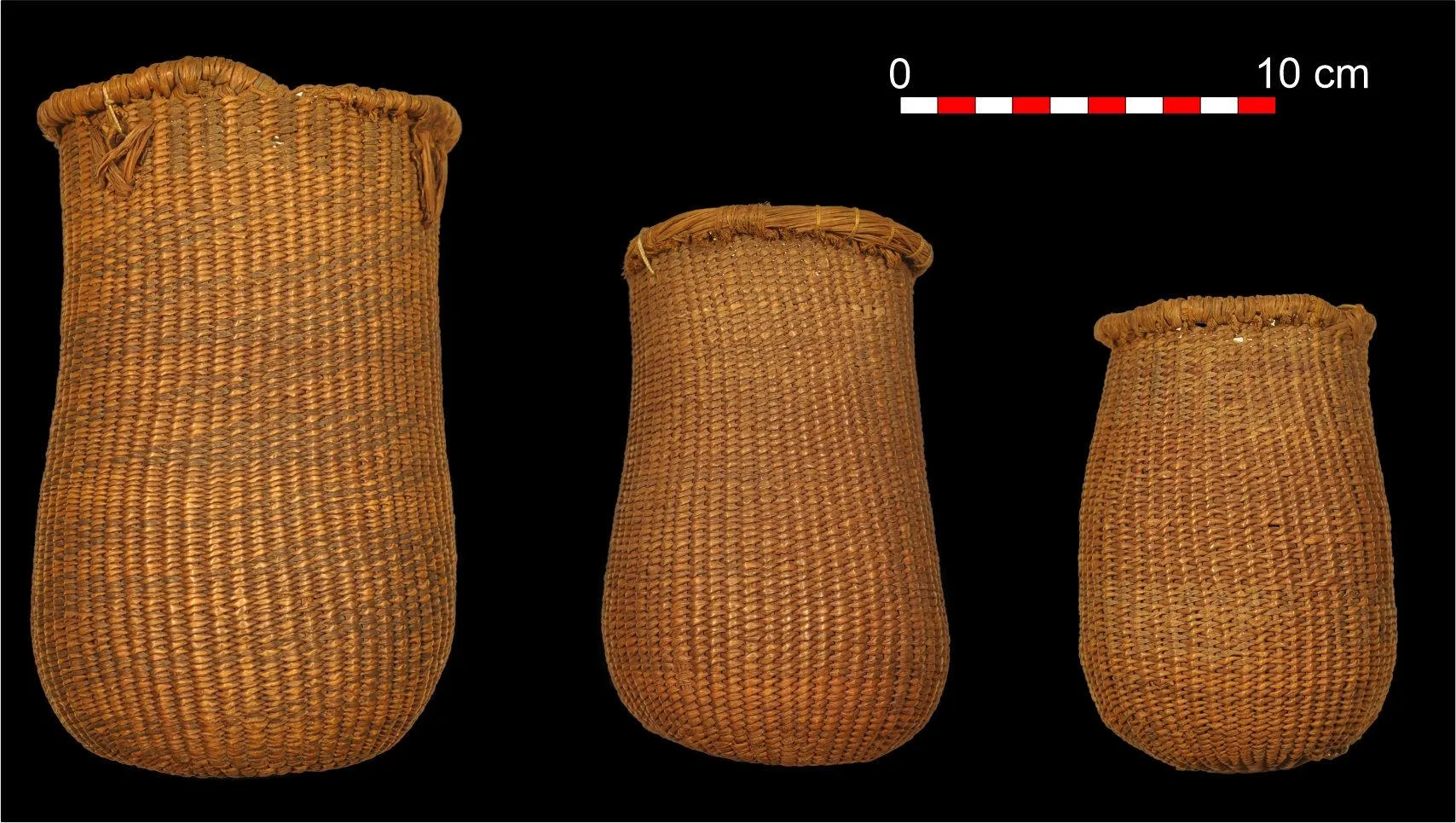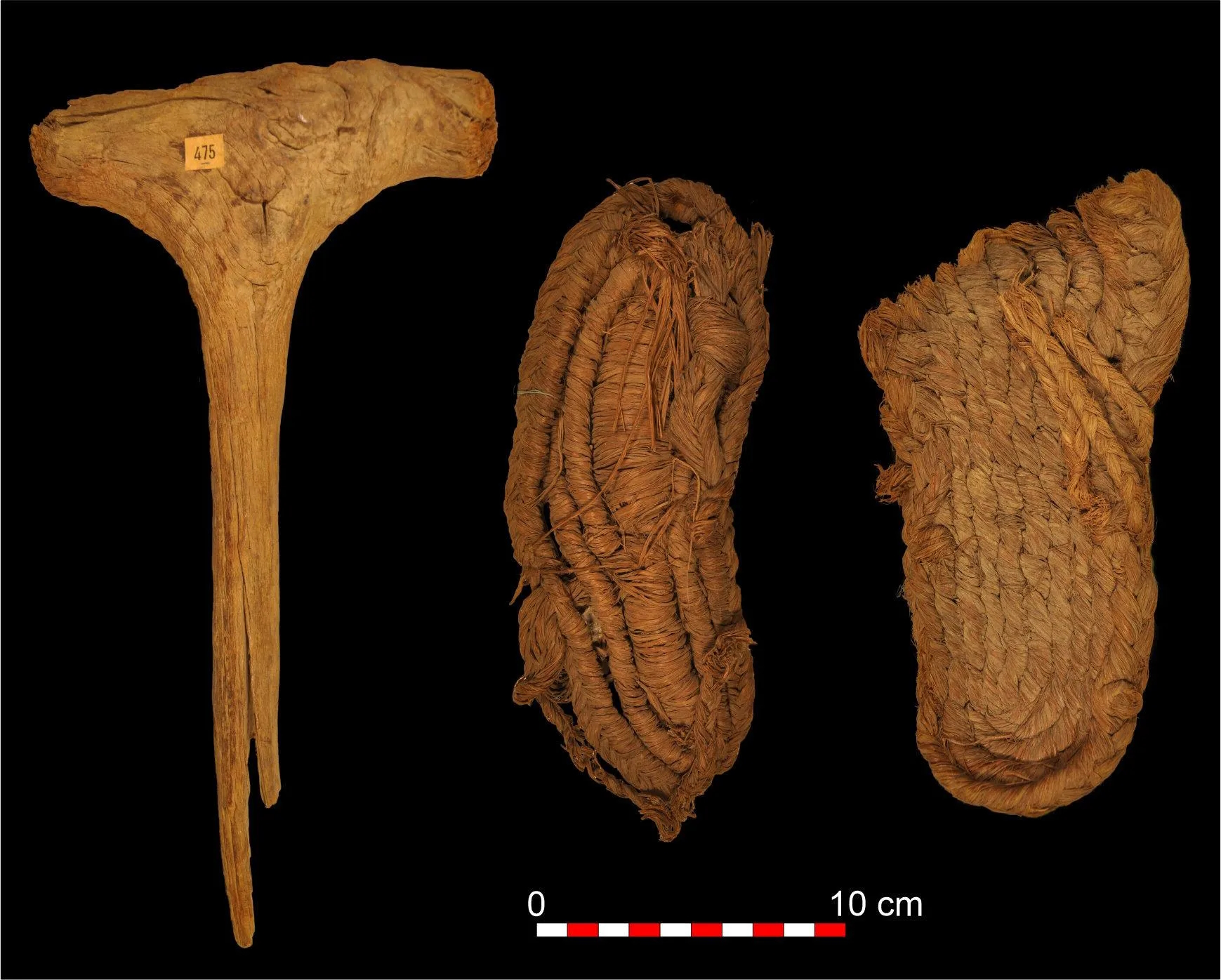Elaborately woven baskets that look like they could have made yesterday but were actually made 9,500 years ago have been discovered in a cave in southern Spain. These are the oldest surviving baskets in Europe. (The earliest basket known to survive was found in a Dead Sea cave and is about 10,500 years old.) Discovered in the same cave is the earliest dated sandal ever found in Europe.
The baskets were found in the Cueva de los Murciélagos (Cave of the Bats) which is 195 feet deep. Its depth makes it extremely arid, and with humidity levels at almost zero, organic artifacts survive in exceptional condition. They were made by Mesolithic hunter-gatherers out of grasses, still used by local craftsmen today to make baskets, shoes and hats. The Mesolithic basket-makers employed closed twining, a weave with no space between the weft elements that creates a tight, high-quality basket. They also made geometric patterns using dyed fibers.
The baskets were left as grave goods. When the cave was first discovered by galena (lead ore) miners in the 19th century, they found dozens of bodies, partially mummified in the arid environment, interred with the baskets, stone tools and boar’s teeth. Unfortunately the finds were not treated with respect back then. The miners used the mummified remains and some of the woven items to fuel their boilers. Later excavations unearthed additional mummified bodies buried alongside basket, sandals and tools.
A recent study analyzed 76 of the artifacts recovered from the Cave of the Bats that are now in the collection of the Museo Arqueológico Nacional of Madrid. Researchers found that 65 of the objects were made with fibers of the flat-leaved esparto grass. Radiocarbon dating divided the artifacts into two distinct periods: the Mesolithic (7950-7360 B.C.) and the Neolithic (4370-3740 B.C.).
After the Mesolithic phase, the cave was unused for 2,000 years. Then Early Neolithic farmers picked up where the hunter-gatherers had left off, weaving esparto grass with more sophisticated and diverse techniques to make a wide variety of objects, including cords, baskets, sandals, mats and bags. Wear analysis of a wooden mallet found in the cave indicates it was used to crush esparato grass which would have made it softer and more flexible and therefore more comfortable for use in things like the soles of sandals, for example.
Some of the sandals show evidence of wear while others were in pristine, unused condition. Archaeologists believe some of the deceased were buried with the sandals they had used in life, while others had shoes made specifically for burial.
The study has been published in the journal Science Advances and can be read here.
* This article was originally published here










No comments:
Post a Comment